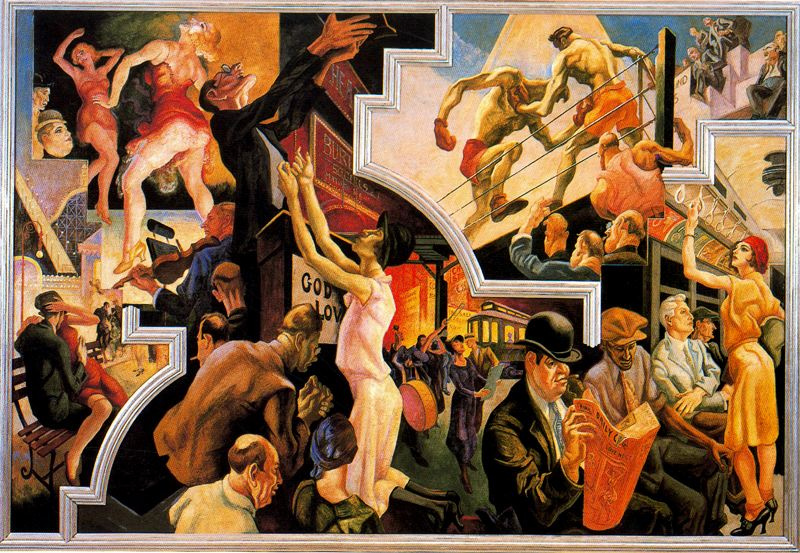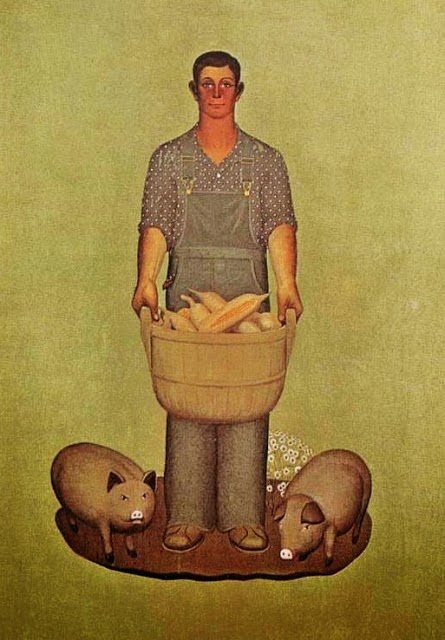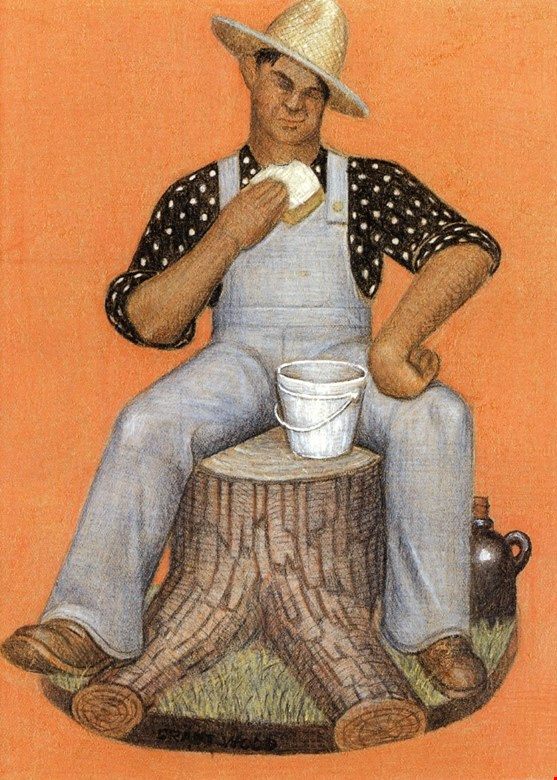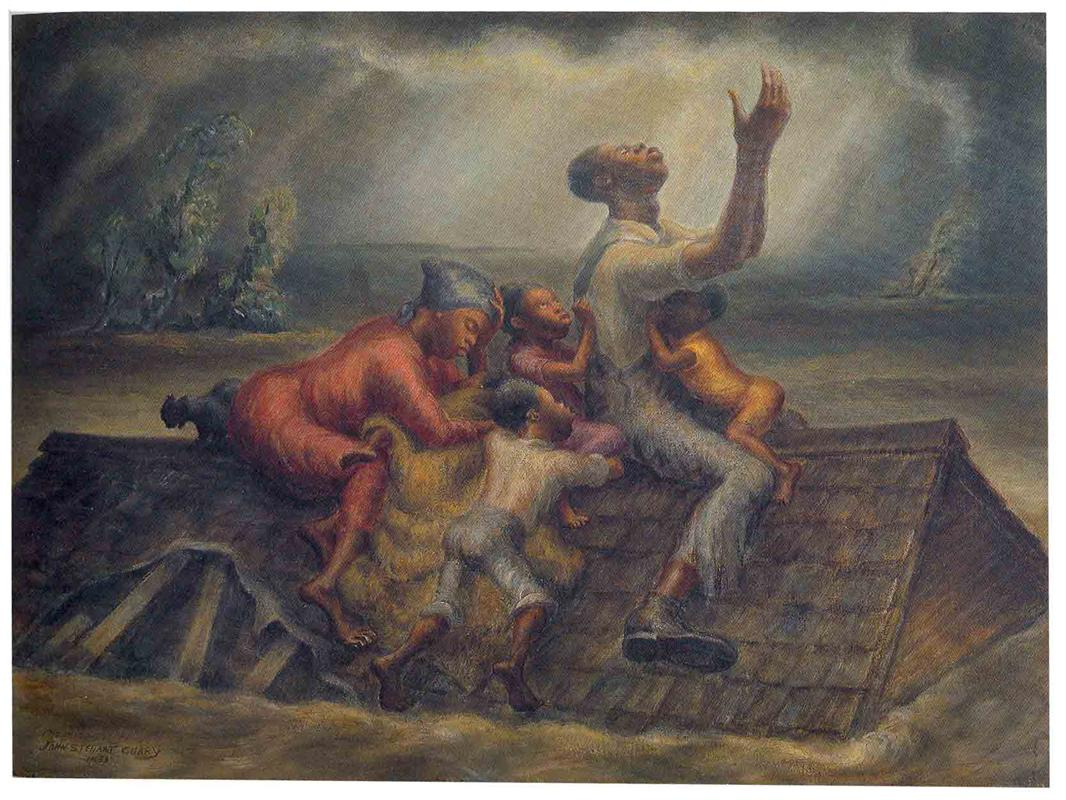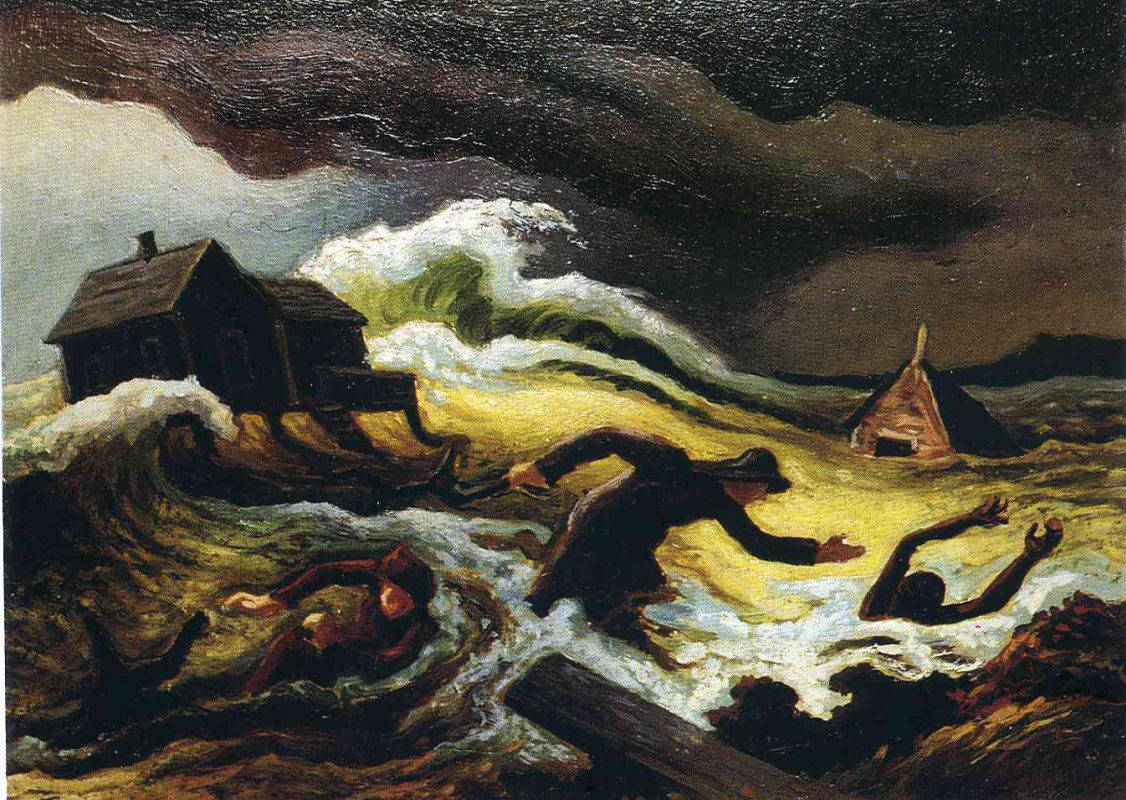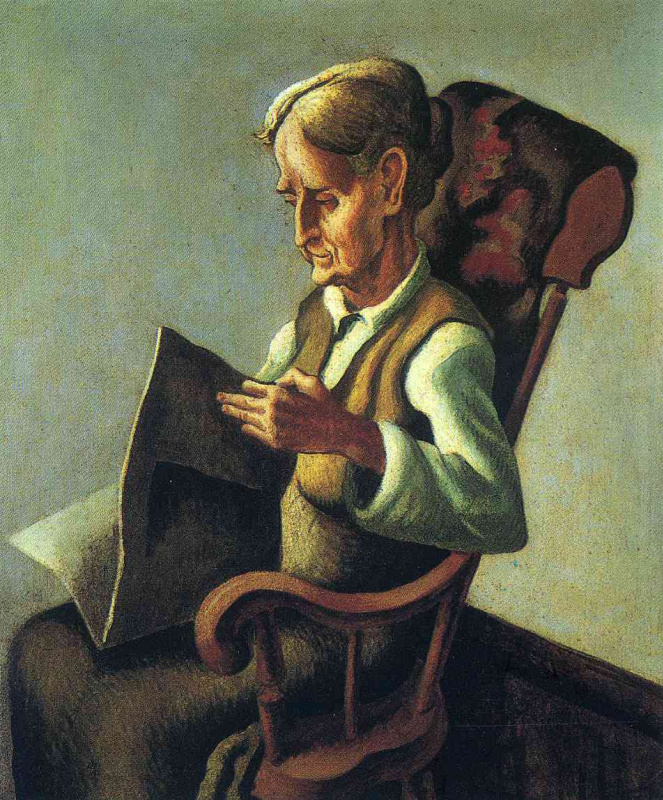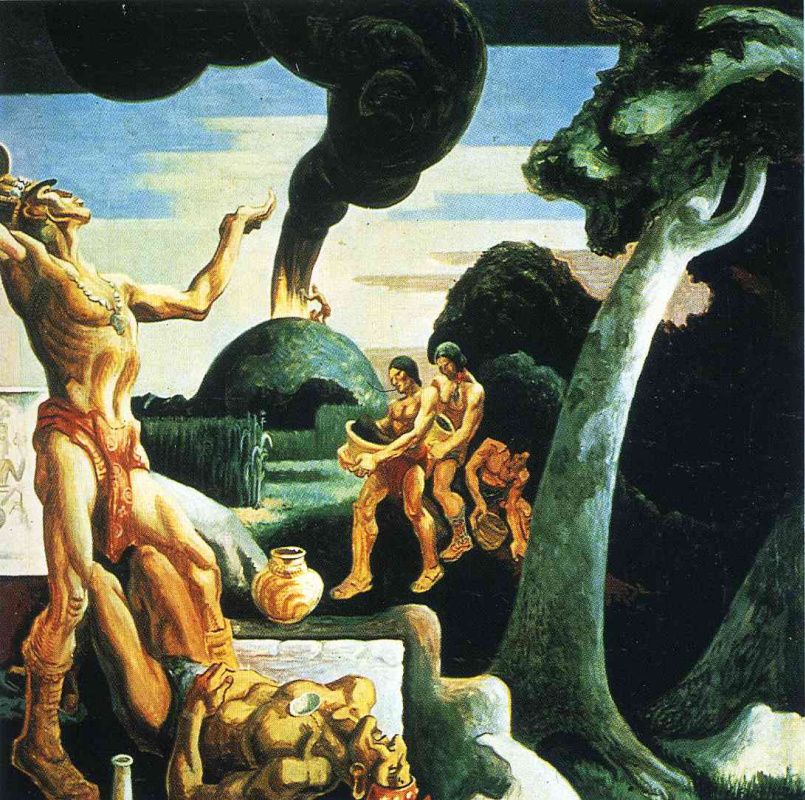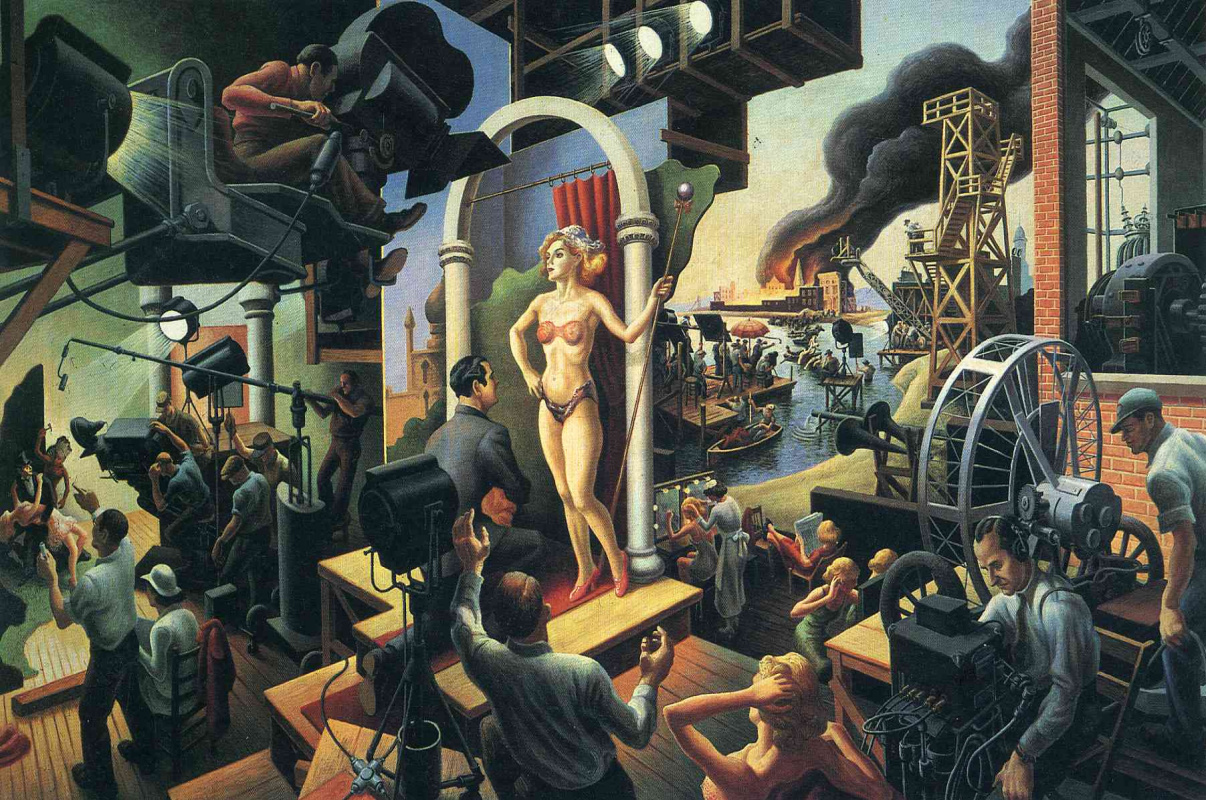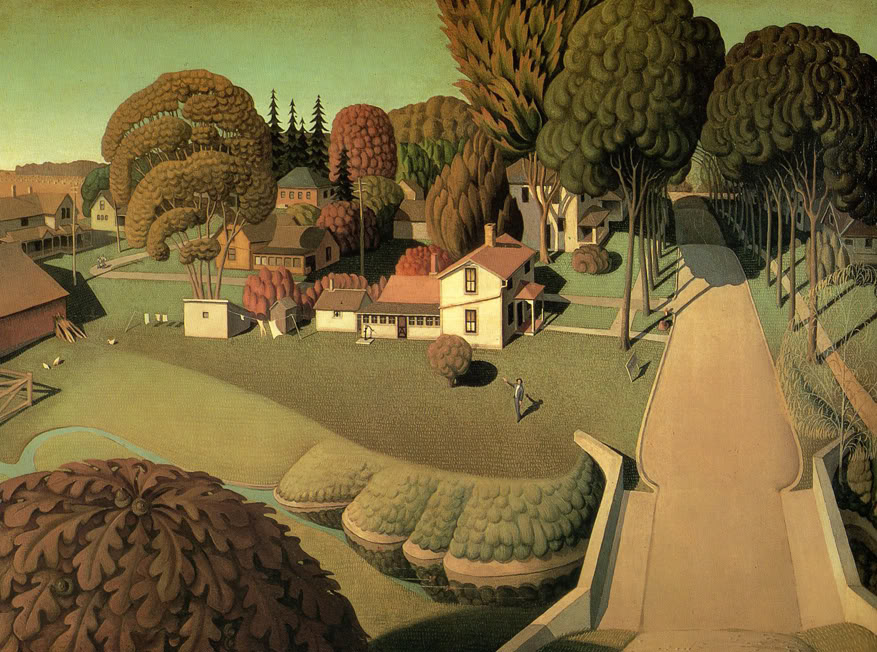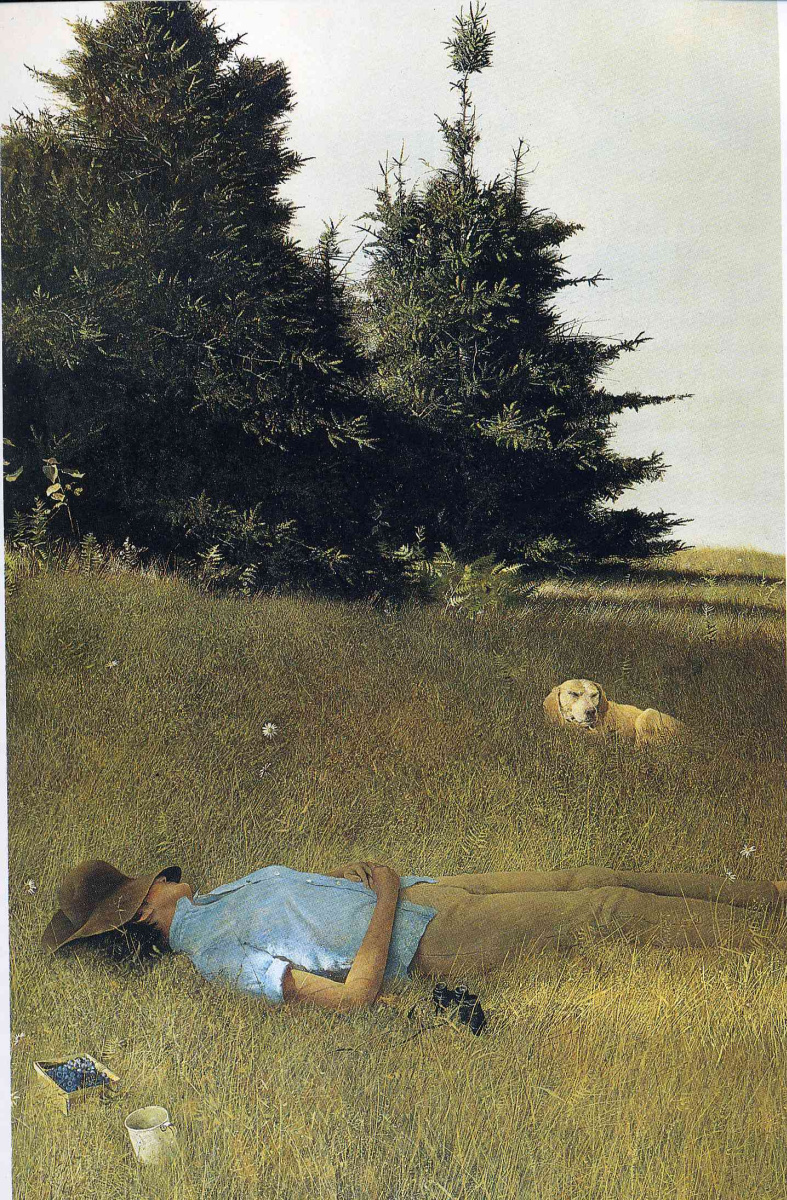Oddly enough, the Great Depression gave the world not only high-profile stories of bankruptcies and Black Tuesday, but also a new, bright page in American painting. The history of the original style, known as regionalism, begins with the collapse of the stock market in 1929 and the ensuing wave of total unemployment. The image of "genuine America" has become a way for artists to contribute to the general idea of the exclusivity and originality of their nation and strengthen the spirit of compatriots.
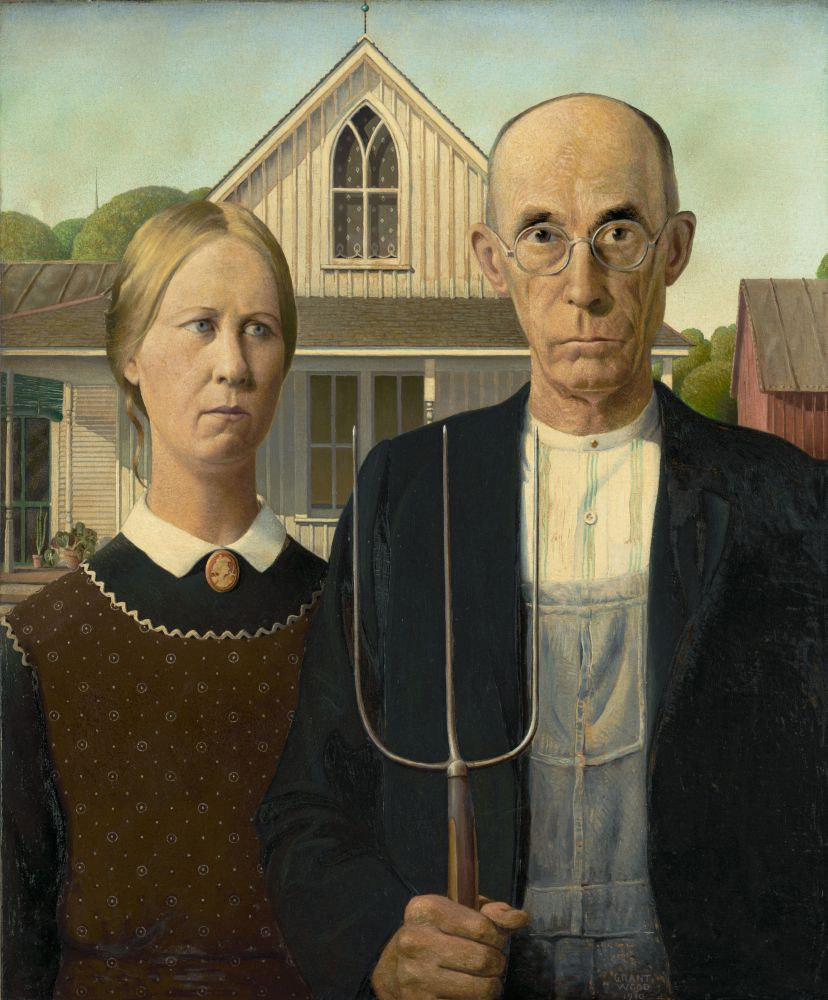
Many Americans were disappointed with the "big city lights", the empty promises of industrialists and the inability of technological progress to withstand the market financial frauds. More and more townspeople looked back with nostalgia toward the good old farms they left in pursuit of a dream. Simple life and honest, albeit hard, work seemed to them to be something stable and unshakable.
Thomas Hart Benton. Detail of the mural America Today — City Activities with Subway 1930−1931
American regionalists decided to go their own way, leaving aside European modernism
and abstraction. As some of them believed, French painting, that was much revered in the art world, was worthy of all praise, but it did not contribute to the originality of the style and creative expression. Using the imagery and narrative of the subjects, the regionalists used fairly simple themes from the lives of their compatriots, which made their work accessible and popular with a wide range of viewers.
Autumn. Plowed field
1931, 76.2×103.5 cm
Three artists made up the famous "regionalist triumvirate" — Grant Wood, Thomas Hart Benton and John Steuart Curry. All of them received a Parisian art education, but the public sentiments and the influence of the Great Depression led them to a different style than that of the European tradition. America’s return to rural roots, the lives of ordinary farmers, the difficulties and joys of their lives became the theme for many of these artists' realistic paintings.
During their studies in Paris, each of the three artists came under the influence of one direction or another. Grant Wood was influenced by the German artists from New Objectivity (Neue Sachlichkeit), the Flemish Hans Memling, and the French pointillist Georges Seurat. The creative style of Thomas Benton clearly shows the elements of cubism, synchronism, as well as the influence of Michelangelo. But Curry was a big fan of Rubens' dramatic stories and the emotionality of Gustave Doré's paintings. And each of the "triumvirate" dreamed of a real, distinctive, American style.
Rating
1932, 74.9×89.5 cm
According to Grant Wood, "artists and critics do not want to participate in American art. They think that this country is too new for any culture and too rude and undeveloped to create any artists. Be a Frenchman, take a French name and draw like a Frenchman to gain recognition." Upon return to the United States, all three began to draw stories from the life of their native places: Wood painted scenes of Iowa, Benton praised the native state of Missouri, and Curry painted Kansas. Based on this principle, the new style was called regionalism.
Tornado over Kansas
1929
Having grown up in a convinced Quaker family, Wood received a thorough art education after the death of his father, including at the School of Design and Crafts (Missouri), as well as at the School of Art of the Chicago Institute and Julian Academy. Being back from Paris, the artist worked as an interior designer, created objects of art and household goods. In 1928, he was commissioned a stained glass work for the Veterans Memorial Project, which he brilliantly completed, and this was a turning point in his career.
The Mississippi
1935
Curry got skilled at painting scenes from village life, working as an illustrator for The Saturday Evening Post and Boy’s Life. And Benton was imbued with realism
at the First World War, serving as an illustrator in the US Navy. After moving to New York, he devoted himself to portraying locals and landscapes. Speaking about the subjects of his paintings, Benton noted: "…these are people who do not boast, who do not pretend that they know more than they know. While what they know is useful. They know how to plow a field. They know where the fish are. But they don’t know anything about aesthetics, museums or art."
The triumph of American regionalism began with the annual exhibition of the Art Institute of Chicago, which, in particular, featured Wood’s famous work "American Gothic" (1930). Newspapers hailed the "American routine" from Iowa, and regionalists received their first public acclaim. Prior to that, Curry was already successful with his painting "Baptism in Kansas" (1926), which was bought several years later by Whitney Gallery, and Benton completed ten "America Today" frescoes commissioned by the New School for Social Research in New York.

John Steuart Curry. "Baptism in Kansas". 1926
The next triumph of regionalism was the "American Painting Since Whistler" exhibition. The exhibition, which presented the artworks by the "triumvirate", took place at the Kansas City Art Institute in 1933. Its organizer, art dealer Maynard Walker, urged patriotic Americans to pay attention to their own national artists and leave behind the "European trash".
Death on ridge road
1935, 81.3×99.1 cm
The development and widespread recognition of regionalism was greatly influenced by art critic Thomas Craven, a friend of Benton and author of the popular book Craven’s Art of Men (1931). Craven not only promoted Benton as the great artist of America, but also strongly condemned those artists who followed European artistic traditions. It was a real crusade to save American painting from the yoke of European modernism
.
In 1932, with the assistance of Grant Wood, the Stone City Art Colony was founded in Iowa. Its main aim was presenting an alternative to expensive training in Europe or New York, which could be used by young artists of the Midwest. The painters lived in vans, worked on portraits and landscapes of their native places, visited the workshops of Wood himself as well as those of Arnold Pyle and Marvin Cohn. The art colony lasted only for two years, as it had to be closed due to insufficient funding.
The birthplace of Herbert Hoover, Western district, Iowa
1931, 75.2×101 cm
In the midst of the Great Depression, in 1935 the American government launched a number of projects to support artists, giving them the opportunity to perform work for public places: hospitals and the subway, office buildings and schools. Many of these government commissions were given to regionalists, because they were very loved by the public. Curry painted for the Department of Justice, and Benton decorated the library of the Whitney Museum.
The midnight ride Paul Revere
1931, 76.2×101.6 cm
Despite the fact that Wood strongly emphasized the uniqueness of the new American art style without reference to the European school, art critic Thomas Craven did a truly disservice to regionalism. He increasingly attacked European art, weaving xenophobic and anti-Semitic statements into his speeches and articles. These speeches were especially disgusting against the backdrop of fascism, which was rising in Italy and Germany.
Gradually regionalism lost its status of the progressive American art and it soon fell into the category of a provincial art movement with claims to originality. He was replaced by abstract expressionism
, which led many areas of American modernism
.
Distant thunder
1961, 194×123 cm
Grant Wood died in 1942, John Curry passed away four years later, and regionalism finally became a past stage in the development of American art. Realism
was no longer in fashion. However, some artists, in particular, Norman Rockwell, Andrew Wyeth, Charles Burchfield, Edward Hopper, interpreted regionalism in their own way, creating nostalgic works dedicated to ordinary people and their simple lives.






